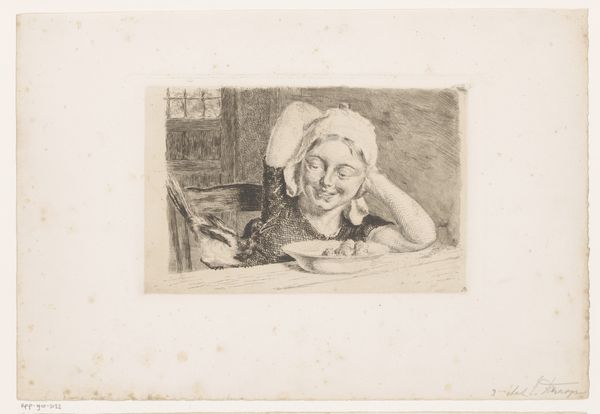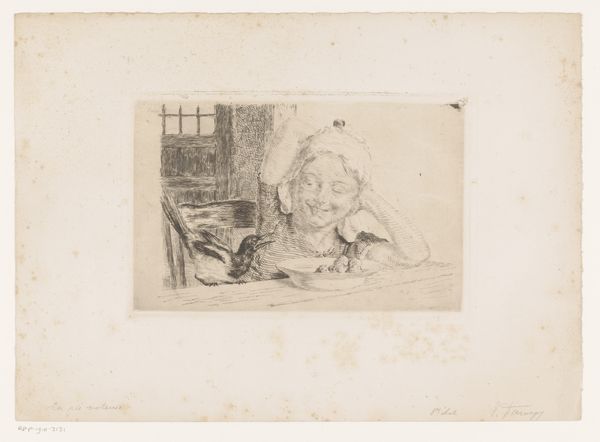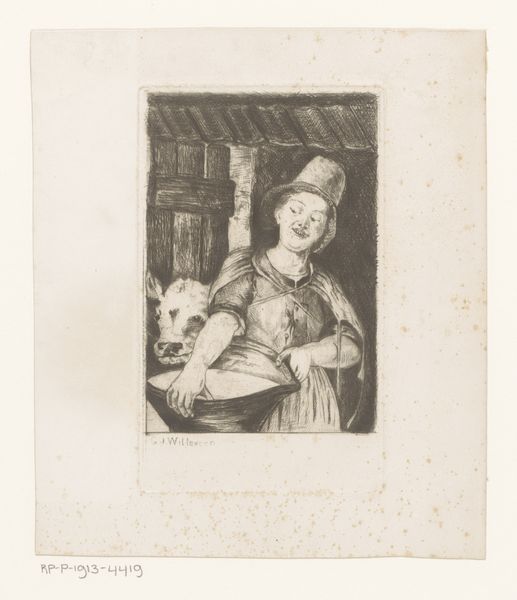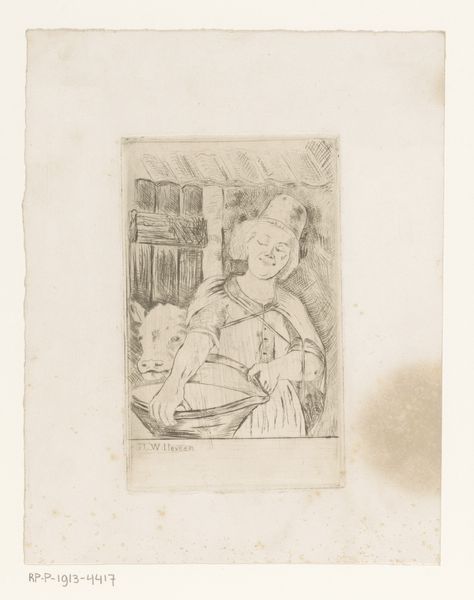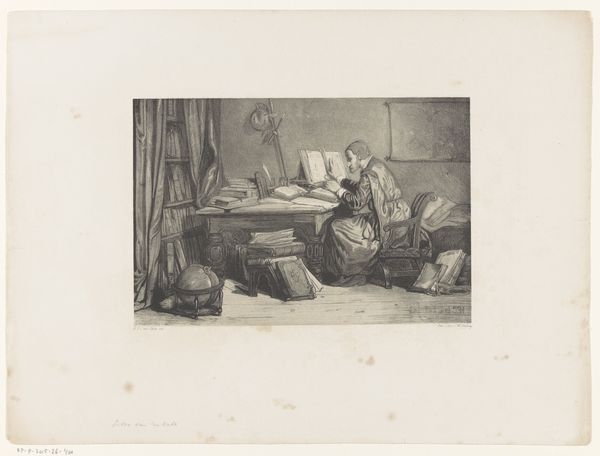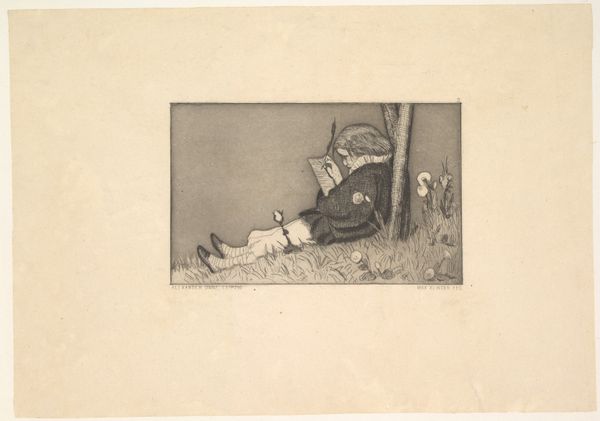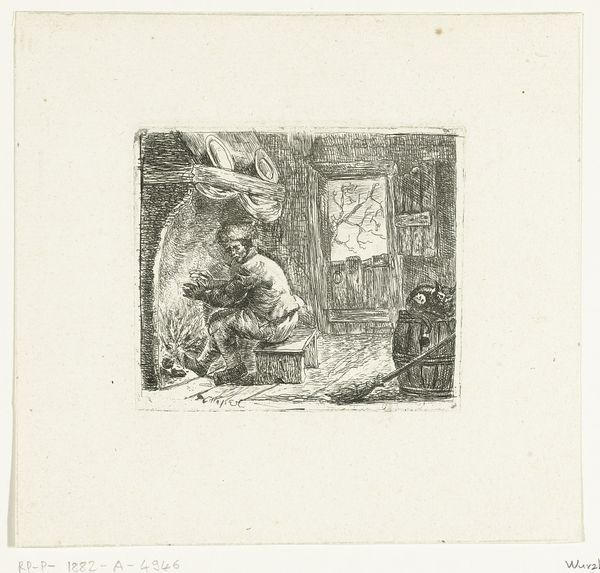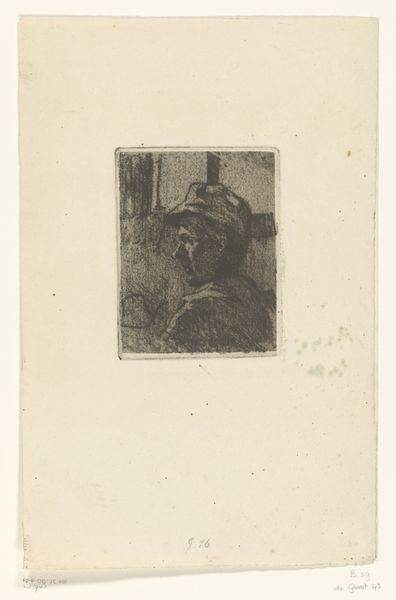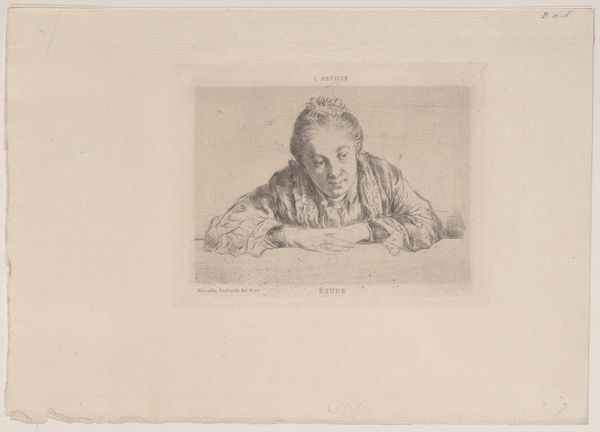
drawing, print, etching
#
portrait
#
drawing
#
narrative-art
#
dutch-golden-age
# print
#
etching
#
figuration
#
genre-painting
#
realism
Dimensions: height 155 mm, width 240 mm
Copyright: Rijks Museum: Open Domain
Editor: This is "Girl at a Table with a Plate of Food and a Magpie" by Edgard Farasyn, likely created between 1868 and 1910. It's an etching, so a print. I’m struck by how simply the everyday life is rendered, but that simplicity also feels loaded. What can you tell me about it? Curator: I’m immediately drawn to the materials. The printmaking process, etching specifically, democratized image production. Notice how it renders visible a domestic scene, likely of a working-class individual, in multiples. What does that suggest to you about consumption, circulation, and the social status of the portrayed subject? Editor: It feels like it gives value to something easily overlooked, bringing the 'lowly' to a higher form... sort of? The process of creating an artwork about the daily lives of the working class through print feels... intentional. Curator: Precisely! Consider the labor involved: the artist, the printer, the paper production. How does this compare to, say, a unique oil painting commissioned by the elite? This etching exists within a network of material production and consumption quite different from the traditional art world. Editor: I see! So, it's less about the girl or the magpie, and more about how this image came to be and how it circulated within a specific society and economic framework. Curator: Exactly. Think about the accessibility of prints versus original paintings. How does that influence the stories being told and who is seeing them? Does it give us an indication as to which societal groups were considered 'worthy' of being represented or appreciated through reproducible art? Editor: It definitely flips the script on what art traditionally was "for". Seeing art in this way is challenging, but I feel I have a richer perspective now! Curator: Absolutely. Focusing on the material realities behind art production encourages us to see beyond aesthetic appreciation and engage with broader social and economic forces.
Comments
No comments
Be the first to comment and join the conversation on the ultimate creative platform.
